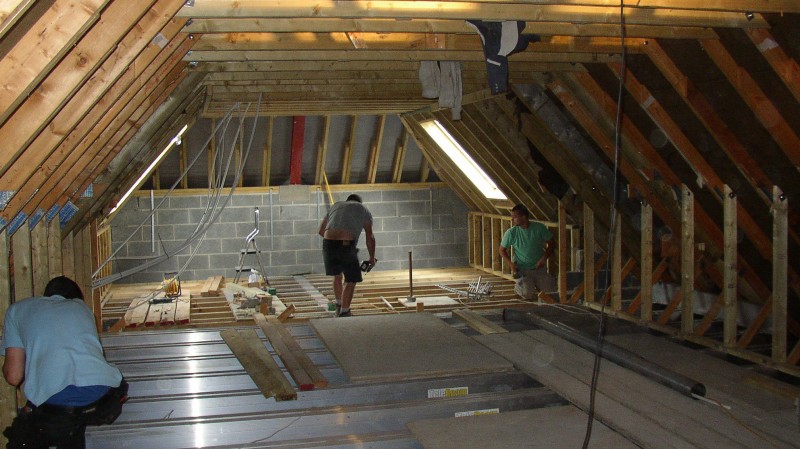You are here: Loft Conversion - a case study
Business owner JJ’s large loft conversion includes a spacious home office, guest bedroom with en-suite, a small study/bedroom plus storage space under the eaves.
JJ and his wife Sue moved into their brand-new house in 1990 and while it was perfect for them as their son grew, later they needed more flexible living space.
“When we first moved in I removed the hatch cover and poked my head up into the attic, I was amazed to find myself looking into a huge space,” said JJ.
“The span was about 8m across and the height in the centre was about 4m up to the top but it was completely filled by roof trusses. A forest of timber rafts and supports stretching out in every direction. My instant thought was this had great potential in future for a loft conversion.
But it wasn’t until years later that the couple built a two-storey side extension and loft conversion, adding an extra 1,000 sq ft of living space. The total cost was £150,000.
JJ had plans drawn up and planning permission was granted within one month. After appointing a builder, the first big question was should they have a temporary roof over the top of the house or could they do without?
The builder was confident they didn’t need one. “We were building during the summer months and as it turned out the weather was kind,” said JJ, adding “This ended up being a considerable cost saving.”
How to strengthen the roof beams was another big decision. While wood beams are used for small loft conversions, steam beams are usually required for larger ones. However steel beams are costly, take up a lot of space and are difficult to install.
After investigating various options, JJ chose an innovative aluminium ‘telebeam’ which kept costs down while providing the necessary extra support for the weight of a new floor. They are light-weight which meant they could be lifted into the roof space without a crane.

“Once all the aluminium floor beams and new wooden rafters were in place and secured, the middle section of all the old roof trusses were cut out to reveal an amazingly large open space,” said JJ.
“Floor boards were then put down. Incredibly, all this was done without any damage to the ceiling below.”
Building Regulations stipulate that if a loft conversion is to be turned into a bedroom, bathroom, study or playroom, it must have a permanent staircase. The couple chose to have the new stairs installed at the side of the house with a gallery landing to make the most of the available head space.
Ensuring the dividing stud walls were in the right place was also crucial to the design’s success which meant there were several tweaks to the original scheme.
“We experimented with possible floor plans by placing bits of timber on the floor and moving them around until we had achieved what we felt would be the best layout.
“We had of course drawn up an initial layout before we started but ended up with a completely different floor plan after moving the markers around.”
Velux windows had to be positioned to light the rooms inside while looking okay from outside. The en-suite bathroom was installed directly above the existing bathroom, giving easy access to the existing plumbing pipework. The couple did all the paintwork themselves, saving a significant sum. The colour scheme is magnolia.
JJ said: “We ended up keeping our costs within budget and everything was done to the quality we required. Loft conversions can be a disappointment if the roof height is limited and as a result the space ends up being pokey.
“Looking back, I was lucky in that the roof had an unusually high pitch and there was lots of head room. In fact, I even ended up with a new small loft space above the new ceiling which means that I still have storage space for camping equipment and other bits of clobber!”
If you are looking for help with Planning Permission, you may need help from some of the following experts. Clicking on the links below will instantly give you contact details for Experts in your local area:
Building Regulations
Find details of local experts who can help with Building Regulations
Architectural Design Services
Find local Architectural Design experts
Builders
Find local help with a building project
Building Surveys
I want a local surveyor to do a Building Survey for me
Structural Inspections
Find an expert to carry out a structural inspection

